I made Martha Stewart's macaroni and cheese in a slow cooker and on the stove, and the easier version won
Erin McDowell

- I recently made Martha Stewart's three-cheese macaroni and cheese in a slow cooker.
- I decided to compare the recipe to a similar Martha Stewart mac and cheese recipe made on the stove.
- The recipes tasted similar and took the same amount of time, but the slow-cooker version was far easier to make.
I recently made Martha Stewart's recipe for slow-cooker macaroni and cheese, and I loved it. I decided to compare it to a stovetop version.
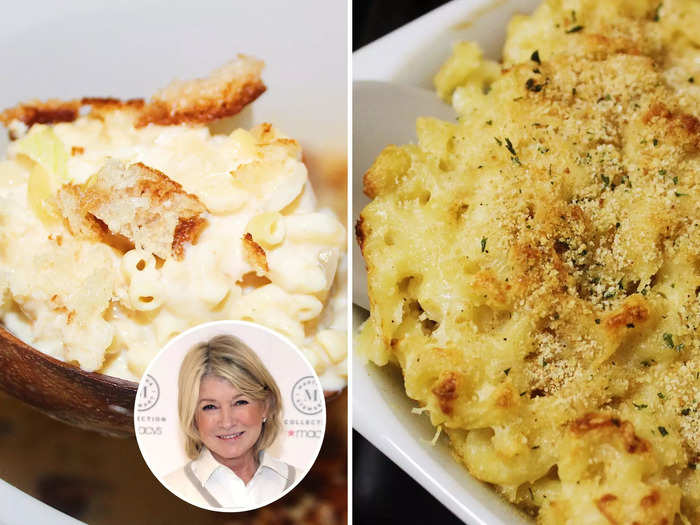
I've tried a multitude of Martha Stewart slow-cooker recipes, and her one for three-cheese macaroni and cheese is one of my favorites. However, I wondered if a similar recipe made on the stove would taste better or take less time.
I decided to compare the methods using similar recipes to determine which Martha Stewart macaroni-and-cheese recipe is best.
For her three-cheese slow-cooker macaroni and cheese, you need - you guessed it - three kinds of cheese, milk, and two cans of evaporated milk to make it extra creamy.
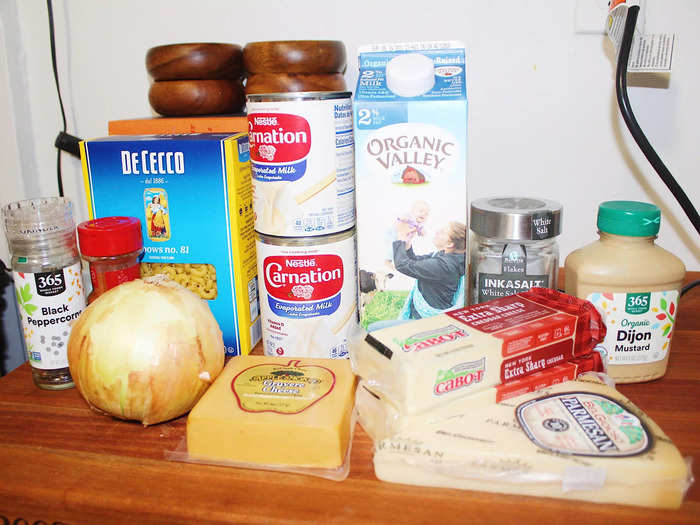
The recipe also includes sautéed onions, Dijon mustard, and seasoning. From the recipe list, I had a suspicion this was going to be a decadent dish.
You can find the full recipe in "Martha Stewart's Slow Cooker."
I started by dicing half of a white onion. I've never used onion in mac and cheese before but found it added a ton of flavor to the dish.
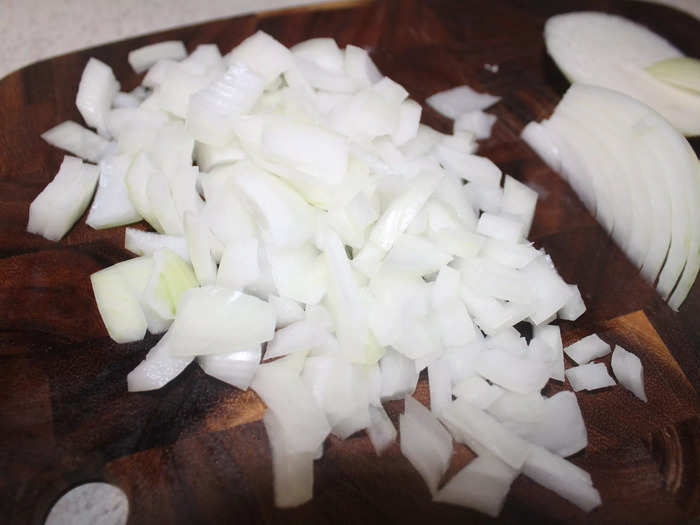
You can also add more or less depending on how strong you want the onion flavor to be.
I sautéed the onion in a nonstick pan until it softened.
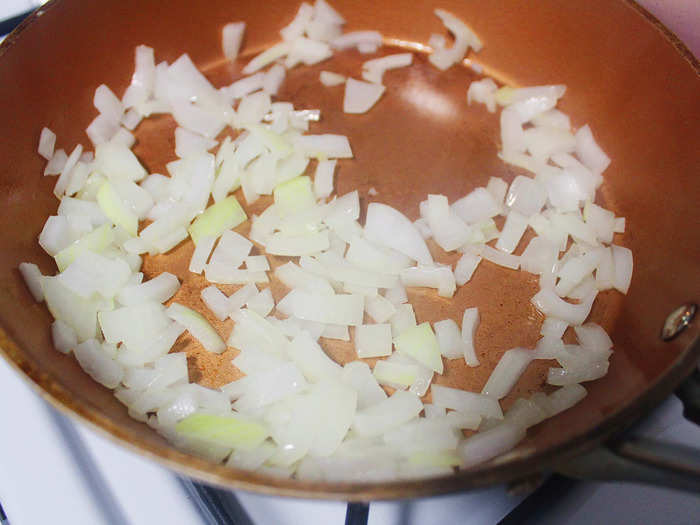
The recipe recommended softening the onion in a tablespoon of butter, rather than oil.
After I shredded the cheese by hand, I added the ingredients to the slow cooker along with the onions.
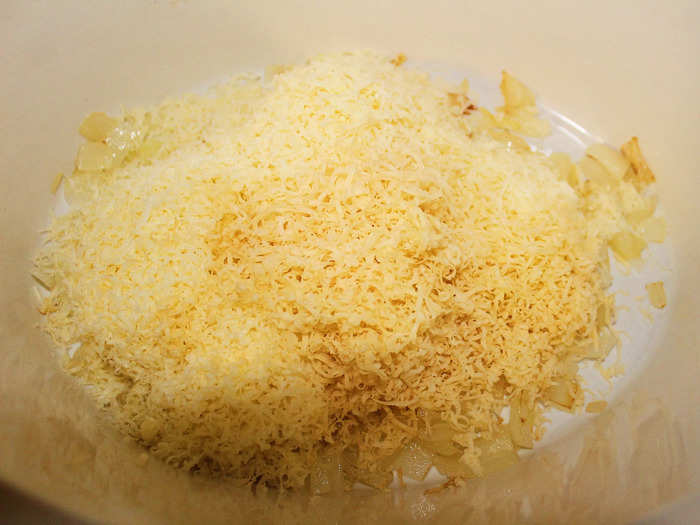
It took quite a bit of work to grate the cheese by hand, and it got a tad messy on the counter. You can also buy your cheese pre-shredded to save yourself a little extra time. However, the cookbook does recommend getting the highest quality cheese you have access to.
Even though it took a little extra effort to hand-grate the cheese, I felt it added to the final result — the different types of cheese combined perfectly together.
The recipe calls for three cups of white sharp cheddar cheese and one cup of Gruyere in the macaroni and cheese mixture. The third and final cheese, Parmigiano Reggiano, is later added to the breadcrumb mixture.
One of the best parts about this recipe is that you don't have to sit around waiting for the macaroni to boil.
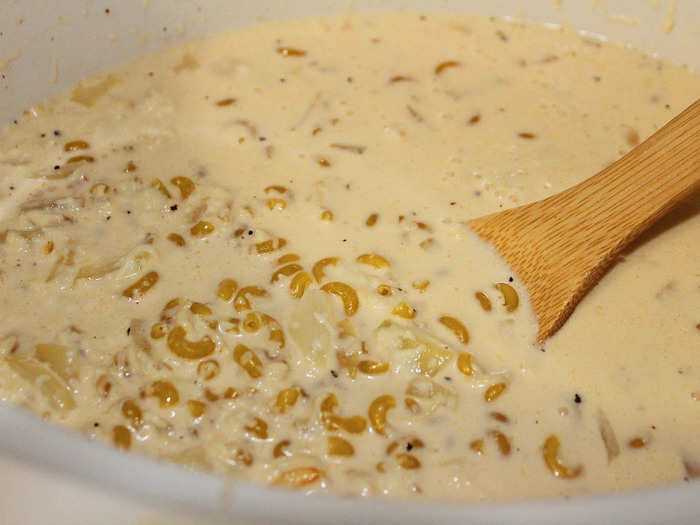
Instead, you simply throw it in with the other ingredients and it cooks itself.
I put the uncooked macaroni noodles in the slow cooker after adding in both kinds of milk, a teaspoon of Dijon mustard, salt, and pepper on top of the onions.
The slow cooker I use allows you to cook on high for four or six hours, or on low for eight or 10 hours. After the slow cooker timer is finished, it will automatically move to the warm setting.
For most dishes I cook in the slow cooker, I manually move the setting to warm because they usually don't need the full cooking time.
While the macaroni and cheese was cooking, I prepared the homemade breadcrumbs.
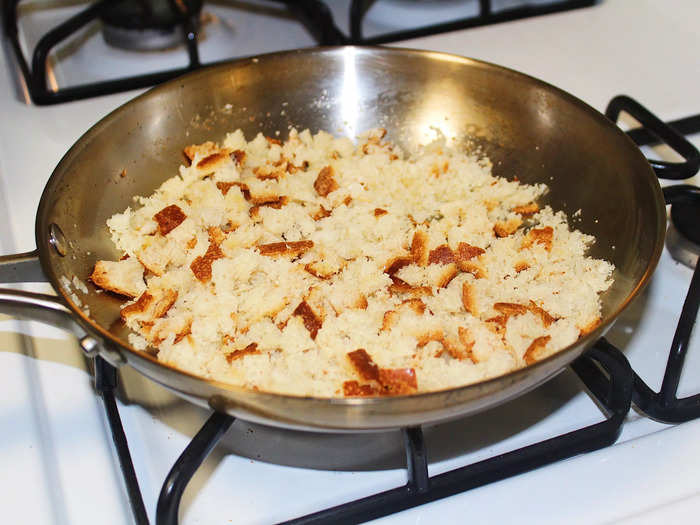
I made the breadcrumbs by pulsing two slices of bread in a food processor. I then toasted them on the stove for a few minutes until they were golden brown and slightly crispy.
I recommend using higher-quality peasant bread or sourdough.
I mixed the toasted breadcrumbs with the Parmesan cheese in a small bowl.
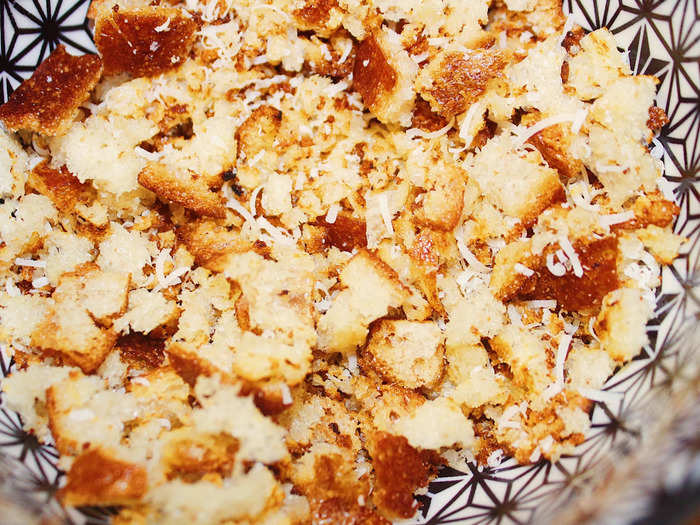
The recipe calls for just a quarter-cup of cheese. I used the freshly grated kind from my local grocery store.
The macaroni and cheese only took an hour and a half on high to finish cooking - it was much quicker than other slow-cooker recipes I've tried.
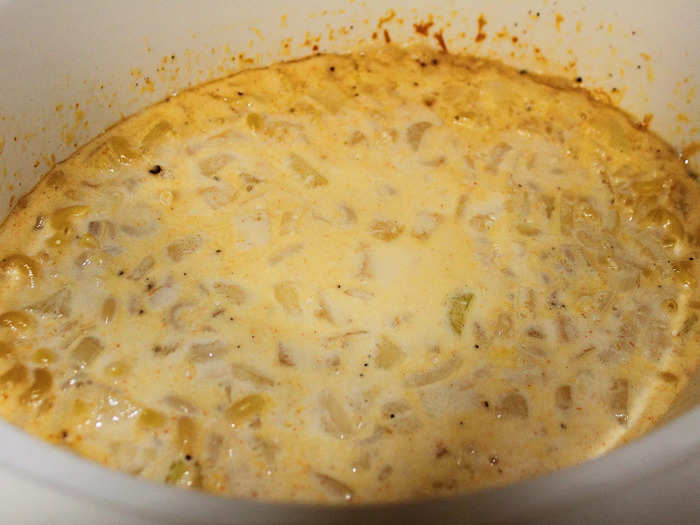
One of my pet peeves about slow cooking is the planning and preparation it takes to do, largely due to how you have to start prepping your dinner around midday if you want it to be done in time.
Being able to start cooking and have dinner done in an hour and a half, without having to wait patiently by the stove, made this dish really convenient. Other slow-cooker recipes I've tried have taken up to six hours, so I thought this was a serious asset.
This was by far one of the easiest recipes I've ever made in a slow cooker.
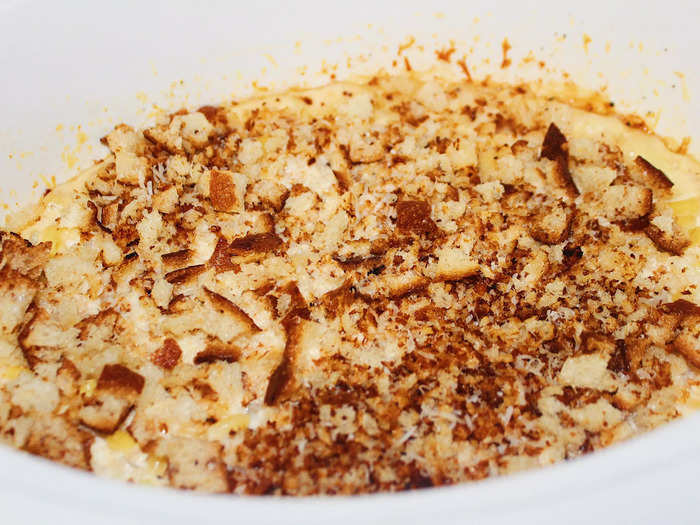
I topped the macaroni and cheese with breadcrumbs and let it continue cooking, covered, for another 15 minutes.
The macaroni and cheese was rich and creamy, and the breadcrumbs added a crispy texture.
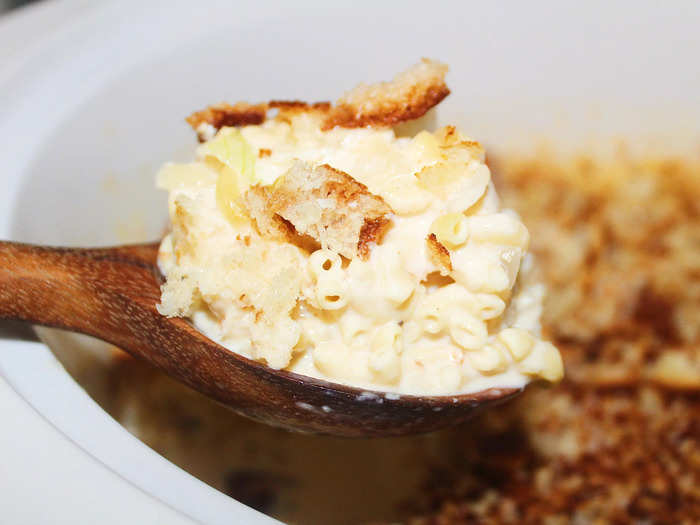
The cheese added a ton of flavor, especially the smoked Gruyere, while the onions made the dish even more delicious. This was by far the most flavorful macaroni and cheese I've ever had, and I thought it was very easy to make.
My only complaint was that the bottom layer of macaroni and cheese could have been a tad creamier — it was a little watery compared to the top layers. However, it probably would have cooked through more evenly with a little longer in the slow cooker.
In fact, after leaving it on the warm setting for another hour or so while I ate, it got even better. This would be a great macaroni and cheese for a party since you can serve it and keep it warm throughout the day.
After making Martha Stewart's recipe for slow-cooker macaroni and cheese, I tried to find a stovetop version similar to the original recipe.
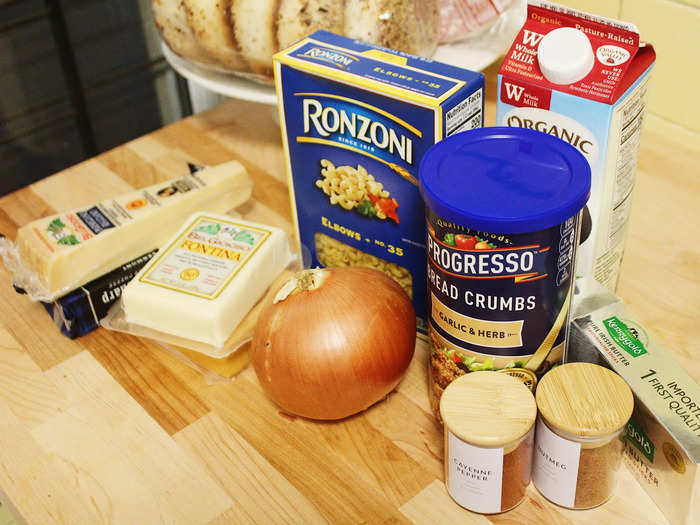
Martha Stewart's recipe for creamy macaroni and cheese included the same types of cheese, yellow onion, and breadcrumbs, so I opted to try that version on the stove.
The stovetop recipe also included fontina cheese and whole milk, which differed slightly from the slow-cooker version.
You can find the full recipe here.
I started off by melting a few tablespoons of unsalted butter in a pot on the stove.
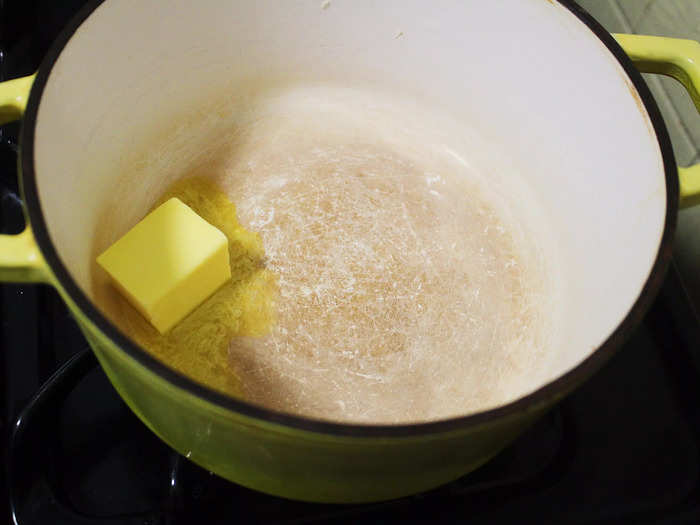
I chose a medium-size pot to make the cheese sauce in.
While the butter was melting, I chopped up some yellow onion.
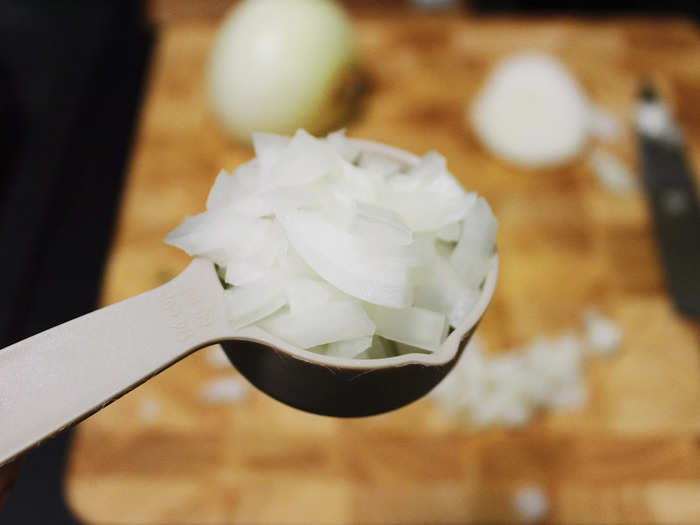
The recipe calls for a quarter-cup of diced yellow onion.
After the butter had fully melted, I added the yellow onion to the pot and gave it a good stir.
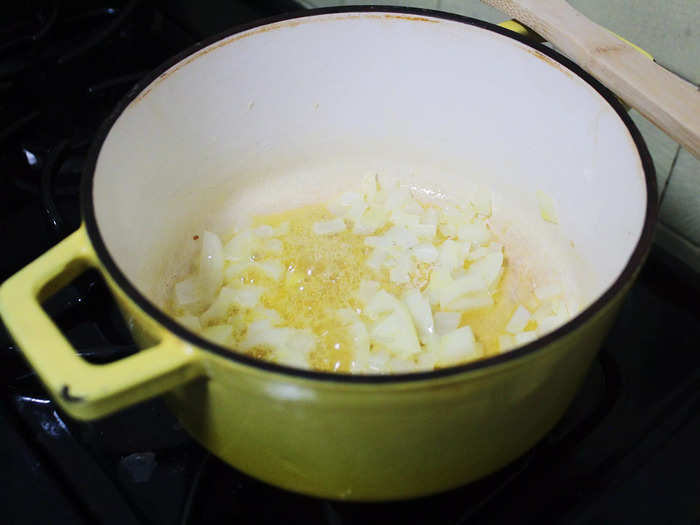
The recipe says to sauté the onions until they become translucent, which should take about five minutes. The smell of butter and onions quickly filled my kitchen, and I certainly wasn't complaining.
While the onions were cooking, I set about the somewhat grueling task of grating all the cheeses.
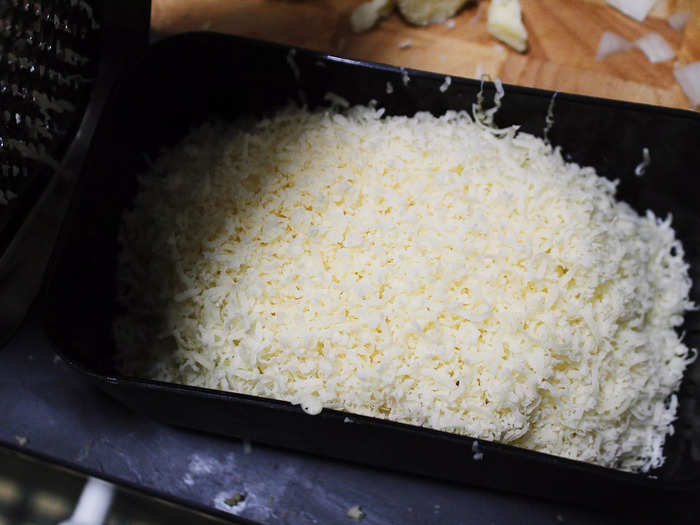
Just like with the slow-cooker version, it took quite a bit of effort to hand-grate the cheeses. It was also difficult to measure out each cheese exactly, so I ended up guestimating somewhat.
However, in the end, I had the right amount of each cheese to make the sauce, plus some cheese left over to sprinkle over the mac and cheese before putting it in the oven.
Next, I cooked the macaroni noodles. This was one step I was able to avoid with the slow-cooker version, but not the stovetop.
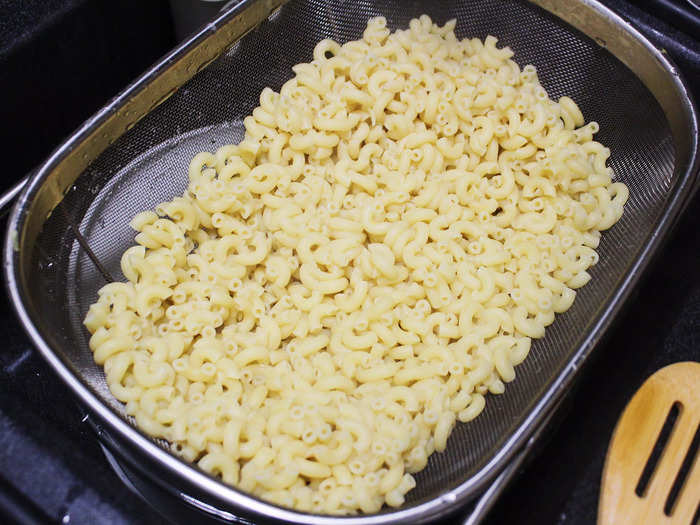
It took about five minutes to cook the noodles, as they're supposed to be a little undercooked before going in the oven.
After the onions had reached the point of being translucent, I added in the flour.
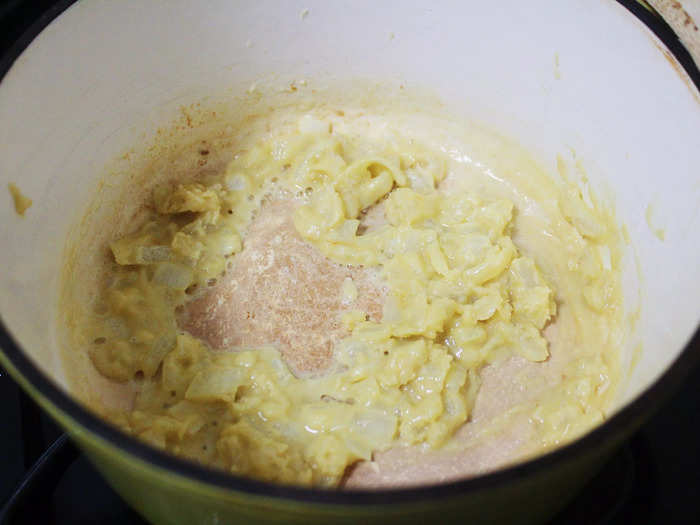
It quickly thickened the onions and butter mixture. Per the recipe's instructions, I stirred the onions, flour, and butter together and left it for a few seconds until the mixture began to bubble in the pot.
I then added three cups of whole milk. The mixture was now starting to resemble a cheese sauce.
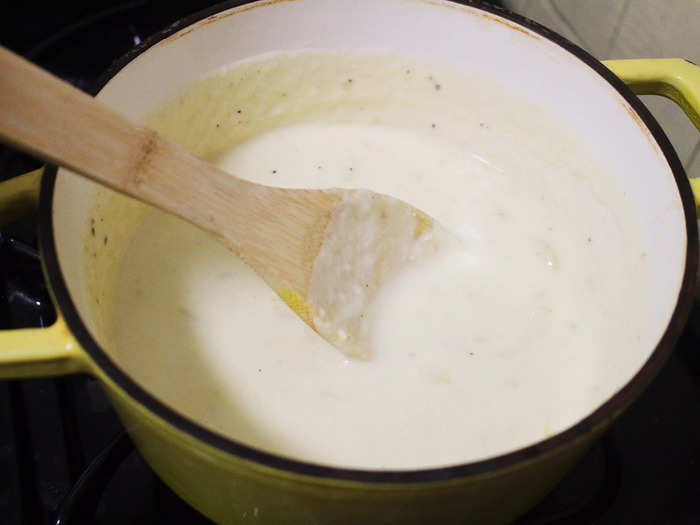
After a few minutes, the mixture had begun to thicken.
To finish off the cheese sauce, I added in the four kinds of cheese - fontina, Gruyere, cheddar, and Parmigiano Reggiano - as well as the seasonings.
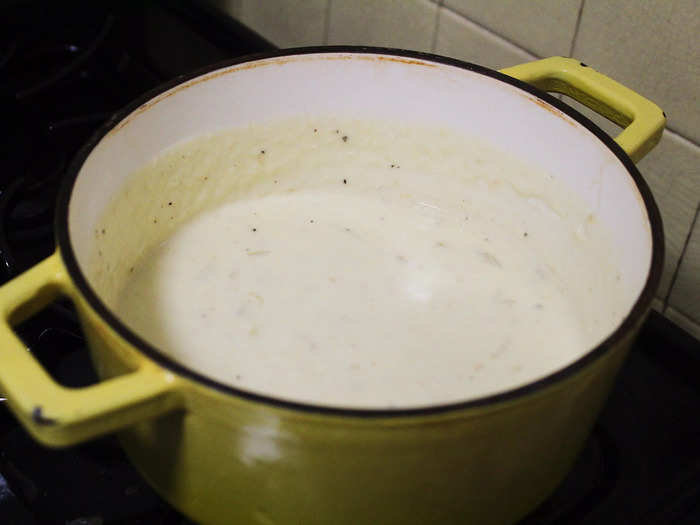
After stirring the cheese sauce until all the ingredients were completely melted and combined, it was time to add it to the macaroni.
By the time I poured the noodles into the larger pot and added the cheese sauce, I had been prepping and cooking for about an hour.
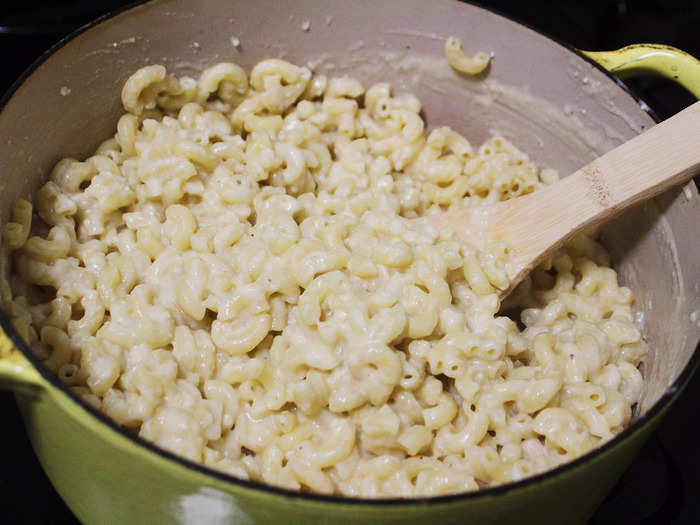
Though this isn't a lot of time to spend in the kitchen, I was surprised that in the end, it would take about the same time for me to make the stovetop version as the slow-cooker version.
I usually think of slow-cooker recipes as taking a really long time, but both recipes ended up taking around the same amount of time to make. The only difference was that the slow-cooker version required far fewer steps and I could sit on the couch while it cooked, rather than actively cooking it in the kitchen.
You can make the mac and cheese in individual pans or in a larger 1 1/2-quart baking dish.
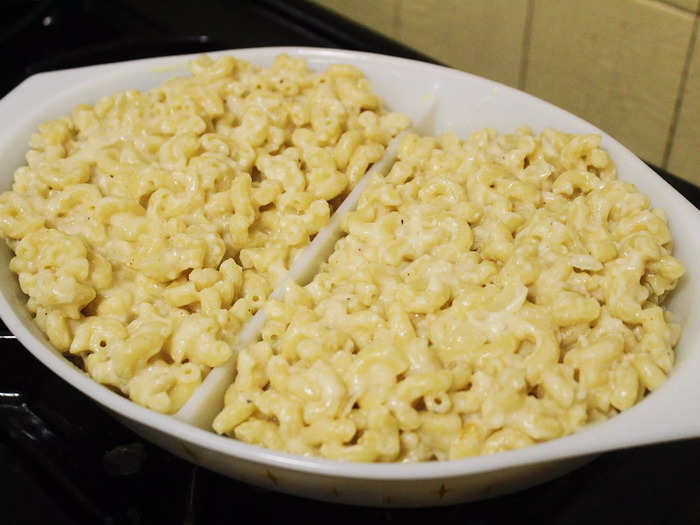
After scooping my macaroni and cheese out of the pot and into the dish, I realized I had a lot left over. I could have easily filled another 3/4-ounce dish.
I then topped my macaroni and cheese mixture with breadcrumbs.
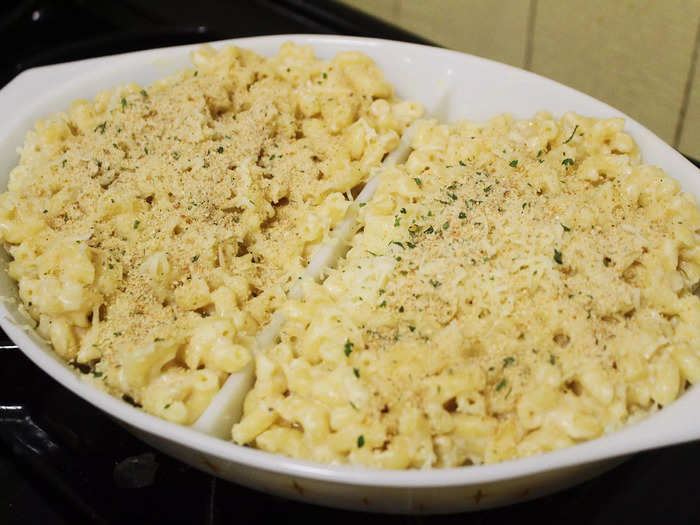
You can use homemade breadcrumbs per the instructions from the slow-cooker version, or you can use store-bought in a pinch. I didn't have a food processor available to make homemade breadcrumbs but found that the store-bought kind didn't negatively affect my end result, and I was happy to cut out a step and save myself some dishes.
For the sake of comparing the two recipes, I decided to focus my critiques on the mac and cheese itself, rather than the breadcrumbs, considering the slow-cooker breadcrumbs were homemade.
After half an hour in the oven, my macaroni and cheese was done.
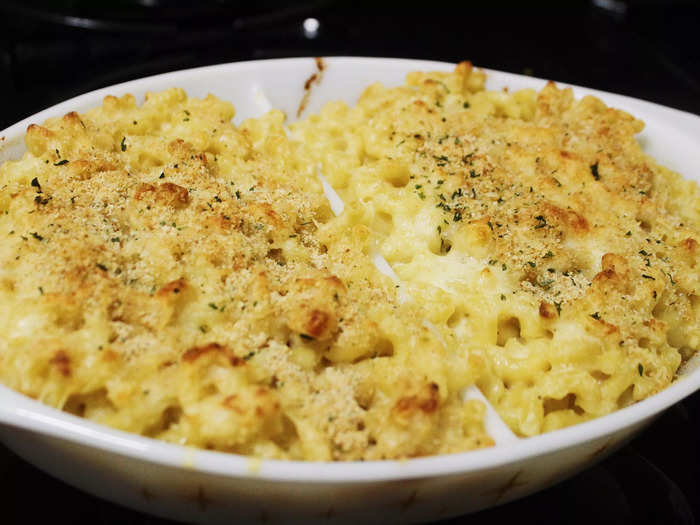
The top layer of macaroni and cheese had a delicious, lightly browned crust, while underneath the macaroni and cheese was still perfectly creamy. It was enough to feed about four people, though I could have fed more if I had more dishes to bake the rest of the leftover macaroni.
The macaroni and cheese was really flavorful, with a slightly smoky taste that mimicked the slow-cooker version.
Overall, the flavor profiles were really similar. The biggest difference was the texture — I definitely preferred the crust on the baked macaroni and cheese to the creamier slow-cooked version.
Both recipes had their pros and cons, and while I preferred the taste and texture of the stovetop version, the slow-cooker recipe was way easier to make.
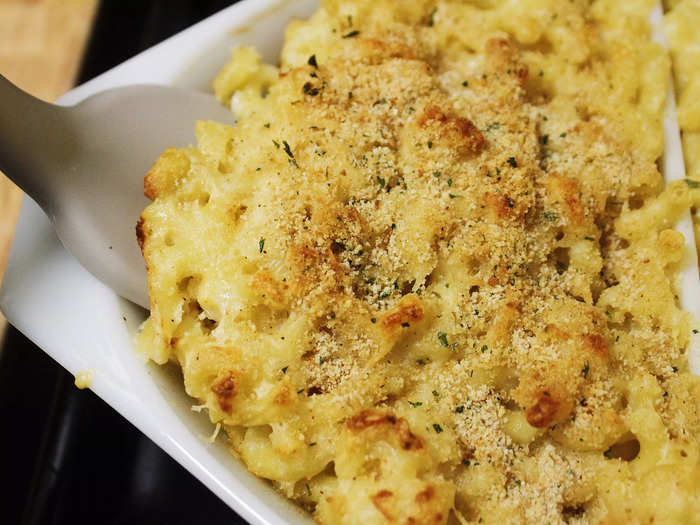
At the end of cooking the stovetop version of the macaroni and cheese, I had a sink full of dirty dishes, pots, and pans. Plus, I was tired from cooking in the kitchen for over an hour. On the other hand, the slow-cooker version took only 20 minutes of active cooking and had virtually no cleanup other than the slow cooker itself.
I did prefer the baked texture of the stovetop version over the creamier, more liquidy slow-cooker recipe. However, a slight textural difference wasn't enough for me to justify the extra effort and cleanup, and for me, the slow-cooker version took the win.
READ MORE ARTICLES ON
Popular Right Now
Popular Keywords
Advertisement